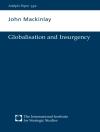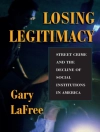The acclaimed naval historian presents an authoritative study of how the 1930 Treaty of London influenced warship design in the years before WW2. After the Washington Naval Treaty of 1922 put a cap on the construction of capital ships and aircraft carriers, the major navies of the world began building ‘treaty cruisers’ and other warships that maximized power while abiding the restrictions. As the French and Japanese excelled in this arena, Britain and the United States sought amendments that would curb their new cruisers, destroyers, and submarines. The negotiations which resulted in the Treaty of London of April 1930 were fraught, and the agreement proved controversial.Warships After London examines warship developments in the five major navies during the period 1930-1936. Long-term plans were disrupted, and new construction had to be reviewed in the light of the new treaty regulations. This led to new, often smaller designs, and a need to balance unit size against overall numbers within each of the categories.As ships produced under these restrictions were the newest available when war broke out in 1939, this book is a major contribution to understanding the nature of the navies involved. Its value is enhanced by well-chosen photographs and by the author’s original line drawings showing the ships’ overall layout, armament, protection, and propulsion.
John Jordan
Warships After London [PDF ebook]
The End of the Treaty Era in the Five Major Fleets, 1930-1936
Warships After London [PDF ebook]
The End of the Treaty Era in the Five Major Fleets, 1930-1936
Купите эту электронную книгу и получите еще одну БЕСПЛАТНО!
язык английский ● Формат PDF ● страницы 320 ● ISBN 9781526777522 ● издатель Seaforth Publishing ● опубликованный 2020 ● Загружаемые 3 раз ● валюта EUR ● Код товара 7556859 ● Защита от копирования Adobe DRM
Требуется устройство для чтения электронных книг с поддержкой DRM












